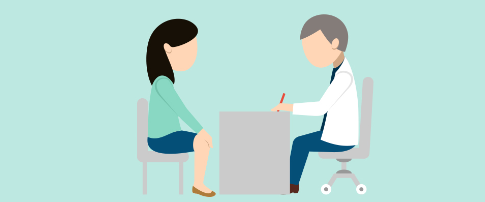Cancer can lead to DVT. What else might add to your risk?1
Active Therapy for Cancer
Cancer therapy itself has been shown to increase the risk for VTE, including chemotherapy, anti-angiogenic therapy, hormonal therapy, and erythropoietin-stimulating agents. The underlying mechanisms are understood, but it has been suggested that many of these therapeutic agents induce vascular damage.
Surgery
Thrombosis is also a common complication of cancer-related surgery. The frequency of VTE in patients undergoing cancer surgery is roughly twice that seen in patients without malignancies who have similar operations. Higher rates of postoperative VTE are seen in patients undergoing major abdominal or pelvic surgery for cancer compared to other cancer surgeries.
Hospitalisation
Hospitalisation is often associated with prolonged immobility. This is a strong risk factor for cancer-associated thrombosis. In the hospitalised setting, the rate of VTE in cancer patients is twice that of non-cancer patients.
Central venous catheters
Central venous catheters (CVC), commonly inserted for chemotherapy, are also associated with a risk of VTE. The incidence of CVC-related deep vein thrombosis (DVT) assessed by venography has been reported to vary from 30% to 60% but catheter-related DVT in adult patients is symptomatic in only 5% of cases.
The wide variability in the incidence of catheter-related thrombosis may be due to differences in catheter type, position, duration of insertion, type of malignancy, and use of different chemotherapeutic agent.
Obesity
Obesity is also an important risk factor for DVT/PE in both men and women. Studies have shown that obese individuals have nearly twice the risk of both PE and DVT, and obese patients less than 40 years of age have nearly a five-fold increased risk than those who are not obese. The risk of development of PE is nearly six times higher among women with a BMI of 35 kg/m2 or more.
Hormone replacement therapy (HRT) and contraceptives
Many women use HRT treatments to alleviate the symptoms of menopause or osteoporosis. These medicines often contain a synthetic version of the hormone called oestrogen, which causes blood to clot more easily. Similarly, birth control methods like the combined contraceptive pill and contraceptive skin patch also contain oestrogen.
If you are already at risk for developing DVT or undergoing treatment, be sure your doctor is aware of any HRT or contraceptive medication you are taking, so you can discuss what is right for you.
Other additional risk factors
There are other risk factors, but they are rare and less relevant for cancer patients. For example, some genetic diseases can trigger DVT and these are usually only identified when a patient does not fit the usual profile (recent surgery or cancer). These diseases include rare Protein C, Protein S and Antithrombin III deficiencies.
If you need more information about any of the above risk factors or conditions, please contact your doctor.

References:
1. Centres for disease control and prevention. What is Venous Thromoboembolism? Available at: https://www.cdc.gov/ncbddd/dvt/facts.html [Accessed April 2024]
UK/IE/MAT- 72248. April 2024
